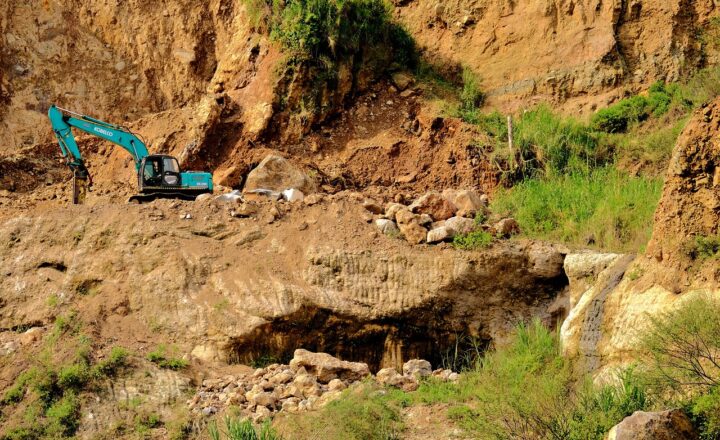Is Eating Dirt Really a Trend? Exploring the Popularity of Geophagy
November 13, 2024

In recent years, a curious phenomenon has emerged—a growing interest in geophagy, the practice of consuming earth or soil. While this may sound strange to many, it has been a practice in various cultures around the world for centuries. The idea of eating dirt raises eyebrows, sparks conversations, and even invites a bit of humor, yet it is shedding light on deeper cultural and health-related discussions. Join us as we delve into the world of geophagy and explore what drives this unusual dietary choice.
1. Understanding Geophagy: What Is It?
Geophagy comes from the Greek words ‘geo’, meaning earth, and ‘phagein’, meaning to eat. This practice involves the consumption of soil or clay, and it serves various purposes, including medicinal, nutritional, and cultural.
Throughout history, geophagy has been practiced across continents—from the United States to Africa, Asia, and beyond. In some cultures, it is deemed a necessary remedy for gastrointestinal distress, while others may do it for the taste or texture. In fact, certain types of clay are sometimes utilized in specific dishes and remedies.
2. Historical Context: The Roots of Geophagy
Geophagy is far from a modern trend. The practice dates back thousands of years and can be traced to early human diets. Some archaeologists and anthropologists suggest that geophagy may have originated from the necessity of consuming edible earth to counteract food shortages or to stabilize fluctuating diets.
Archaeological evidence highlights clay ingestion in ancient Egypt, where it was believed to prevent gastrointestinal ailments. Similarly, indigenous cultures have relied on soil consumption as part of traditional medicine practices. For many, geophagy represents a cultural heritage that links dietary habits to ancestral practices.
3. Health Implications: Why Do People Eat Dirt?
Proponents of geophagy claim health benefits associated with the consumption of certain types of earth and clay. Some of the reasons cited include:
- Mineral Content: Proponents assert that specific soils are rich in vital minerals such as calcium and iron, which could supplement a nutrient-deficient diet.
- Digestive Aid: Soil is believed to help relieve gastrointestinal distress, act as a natural laxative, and absorb toxins or pathogens in the digestive tract.
- Pregnancy Cravings: Pregnant women, especially in certain cultures, may experience cravings for soil or clay, believing it may alleviate nausea or provide needed nutrients.
However, it is crucial to note that eating dirt can pose health risks. Soil may harbor harmful bacteria, parasites, or toxins, which can lead to illness or injury. As such, scientists emphasize the importance of only consuming processed or food-grade clays under controlled circumstances.
4. Modern Acceptance: Geophagy as a Trend
Recently, geophagy has witnessed a revival, particularly among health enthusiasts seeking unconventional eating habits. Social media has played an essential role in elevating the practice, with influencers sharing their geophagic experiences, recipes incorporating clay, or promoting health benefits associated with the practice.
Health blogs and alternative medicine circles tout the benefits of clay ingestion, particularly Bentonite clay, which is believed to detoxify the body. Brands marketing edible clay products have surged, offering powders, capsules, and even gourmet supplements that tout health benefits. The trend raises several questions, including:
- Are these products safe? Environmental contamination and misleading claims pose significant health risks.
- Is there real scientific backing? The scientific community remains skeptical, urging comprehensive studies to gather empirical evidence.
- What does this mean for traditional practices? The fusion of ancient customs and modern trends can lead to misunderstandings and exploitation of indigenous cultures.
In recent years, geophagy’s recent resurgence within wellness communities reflects a broader exploration of alternative diets, leading many to reexamine their relationship with natural products and holistic health.
5. Cultural Perspectives: Beyond Dietary Choices
Geophagy serves as a fascinating lens through which to view cultural attitudes toward food, health, and the environment. In many cultures, dirt eating is more than sustenance; it connects individuals to their heritage, environment, and social identity. The spiritual dimension often attributed to soil consumption cannot be overlooked.
Some communities regard soil as a way to access the earth’s nutrients or a means of grounding oneself. Social taboos around eating soil differ across cultures, which emphasize. Geographic, social, and economic factors significantly influence whether geophagy is accepted or stigmatized.
6. Conclusion: The Future of Geophagy
As our understanding of human diets evolves and interests in sustainable living grow, geophagy may find its place in contemporary discussions about nutrition, health, and wellness. While it continues to halt many in their tracks, it also invites curiosity and prompts deeper conversations about cultural practices.
For those considering this dietary option, it’s crucial to approach geophagy with caution—emphasizing safety, health risks, and individual dietary needs. Though eating dirt remains an unconventional trend, it serves as a reminder that our relationship with food is often complex, shaped by history, culture, and personal experience. The clay from the past continues to stir conversations in our modern world, encouraging us to scrutinize our dietary choices and their roots.







